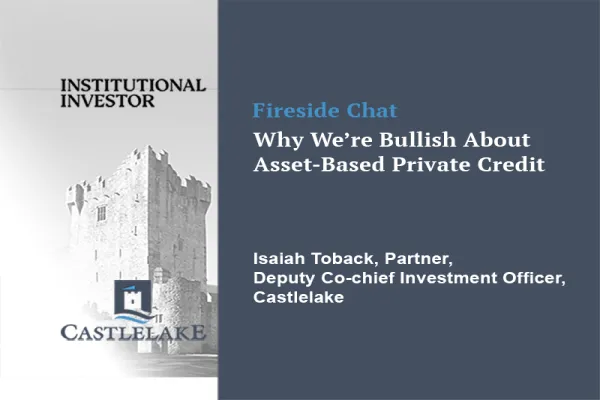The cheetahs, as Bart Chilton, a commissioner with the Commodities Futures Trading Commission, calls high frequency traders, have come under ever-greater scrutiny from the CFTC and Securities Exchange Commission.
In March CFTC chairman Gary Gensler said that the agency would expand day-to-day monitoring of HFT and on March 29, Scott O’Malia, chairman of the commission’s Technology Advisory Committee brought together members of a new subcommittee on high frequency trading.
Among the members of the HFT committee, which includes representatives from BATS Global Markets, CME Group, NYSE Euronext and HFT trading firm Getco, is Irene Aldridge, founder and managing partner at Able Alpha Trading, a New York–based high frequency trading and consulting firm.
Aldridge is also the author of High Frequency Trading: A Practical Guide to Algorithmic Strategies and Trading Systems, published by Wiley Publishing, which will be updated with more content for both lay readers and HFT practitioners and rereleased in December of this year.
Institutional Investor contributor Katherine Heires recently spoke with Aldridge on some of the questions that have been raised of late about HFT practices.
Institutional Investor: What are some of the misconceptions about high frequency trading that you hope will come out of the CFTC and SEC investigations about HFT and perhaps will be better understood?
Irene Aldridge: One is that all automated trading exists to abuse the market. I hear that again and again. But people do not have real proof of that. And just this morning, I was on a LinkedIn discussion where someone insisted that any kind of automated trading is really abusing the markets. The argument you hear is that, “You just have to watch the market, and you can see how automated trading abuses the market.” But with no scientific examination, that’s not a justifiable argument from my perspective.
In my view, what is going on with the advent of high frequency trading is computers are erasing margins for all players, especially for traditional players. If you are a single trader sitting at home and trying to bet on intraday market moves, you cannot compete with the machines. Computers are much more capable of processing large amounts of data. While people only see 20 frames of data per second, computers provide processing power that is a million times superior to a human and unlike a human, doesn’t get up to get a cup of coffee. The old, human-based business models may not work anymore, especially when you factor in trading in multiple asset classes.
What is your response to complaints that incentives for HFT traders ultimately penalize retail traders?
In equities, everyone, including retail traders, can place limit orders and collect rebates. The retail traders are generally less comfortable with limit orders because they lack education about how limit orders work. In addition, in a retail environment, broker commissions typically dominate rebates. A retail rebate on NYSE is $0.13 per 100 shares. A retail broker commission for just transmitting an order ranges from $0.65 to $12 per trade; rebates are really a drop in the ocean because retail investors get “fried” on broker commissions.
What are your thoughts about the possibility of regulators imposing minimum resting times for quotes before they can be cancelled?
Sadly, such calls are typically, being made by computer-illiterate brokers who resist innovation and try to stall it by stalling proliferation of technology. The real issue at hand is the clogging of the Internet bandwidth that occurs when unnecessary order cancellations fill the quote and trade messaging routes, prohibiting legitimate and useful message traffic from going through between clients and exchanges. Imposing the minimum time on order validity would not solve the bandwidth constraints — what if one places one million useless orders, only to cancel them three seconds later as opposed to one second later? The real solution lies in restricting the number of order cancellation altogether. And much computer-literacy education is required to help people understand the real issues in this space.
If there is more regulation for HFT in the U.S., will HFT activity simply shift to exchanges in other countries? What do you expect to see happen?
Yes, order flow has become much more international over the past year or so. Traders who already have the capacity to execute in several countries are much more likely to migrate all their order traffic entirely abroad. These traders also happen to be technologically savvy and many of them are indeed high frequency traders.
How do you see HFT activity evolving over the next year or two?
From my perspective and from conversations with other industry participants, I only see HFT growing, unfortunately often at the expense of broker-dealers, and more precisely, manual market makers. This is good news for all investors, as the broker commissions are likely to decline, further democratizing the entire trading process.
Katherine Heires (mediakat@earthlink.net) is a freelance journalist and founder of MediaKat LLC.






